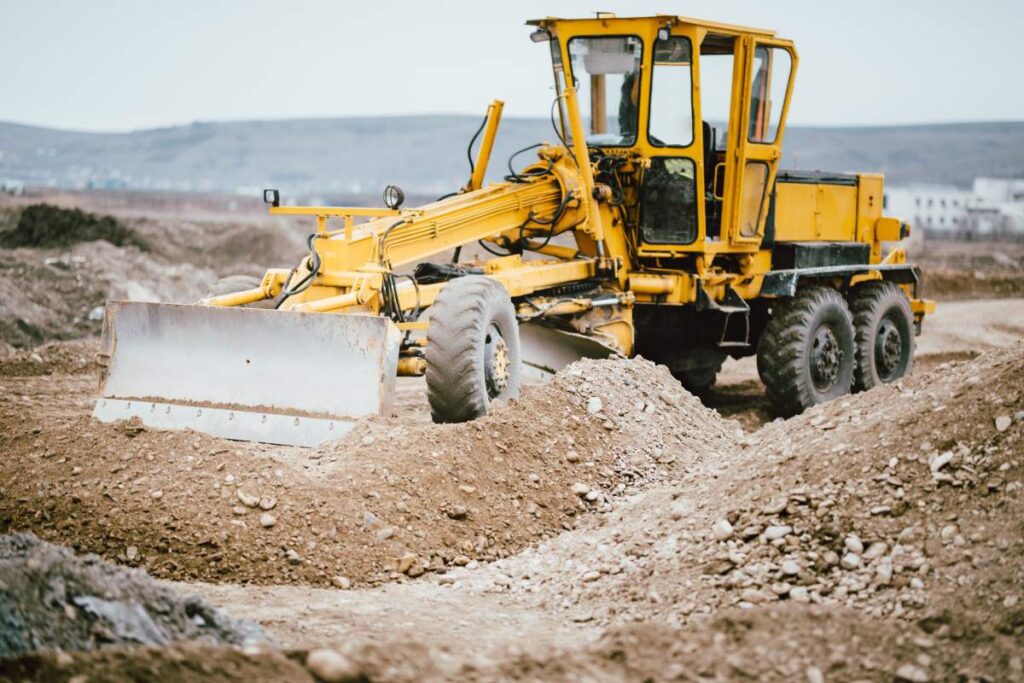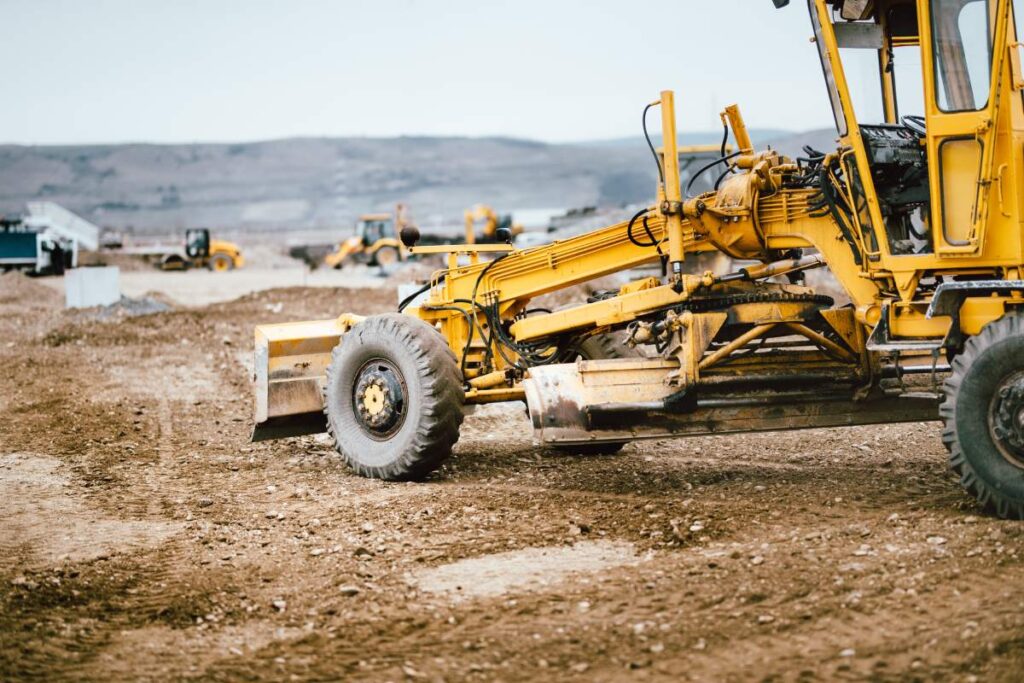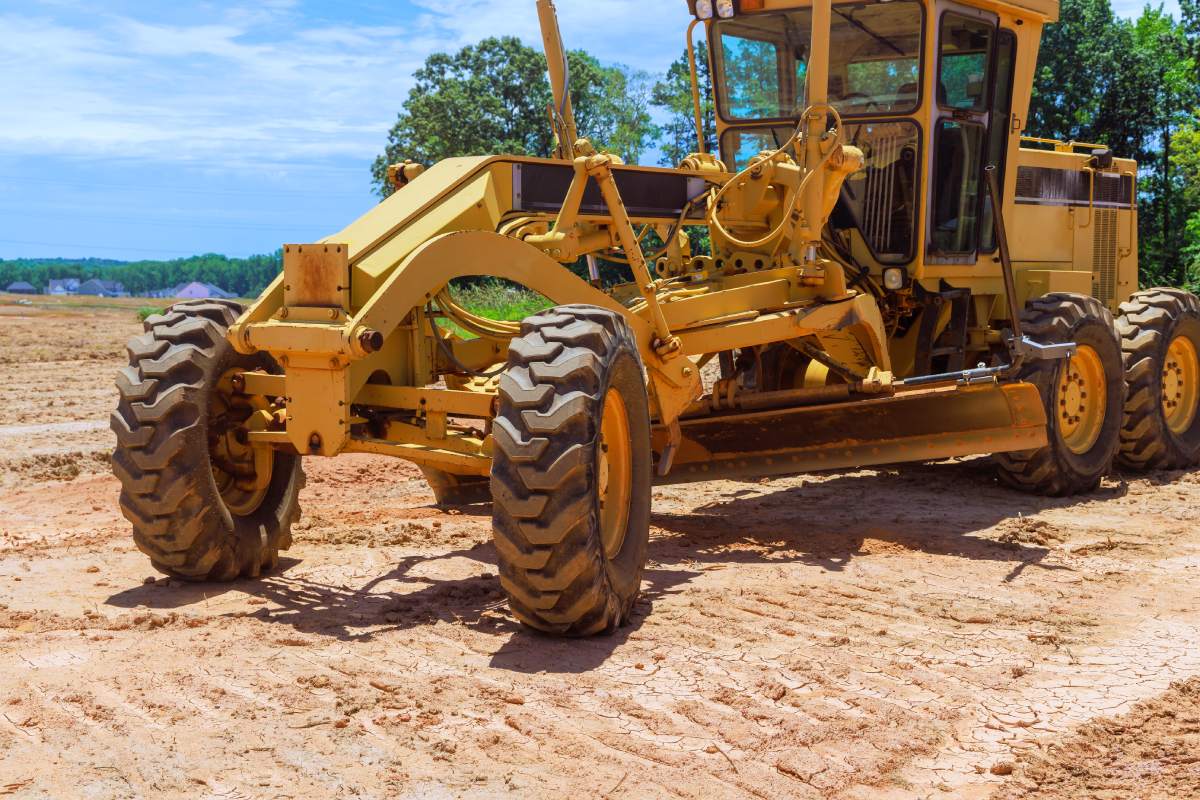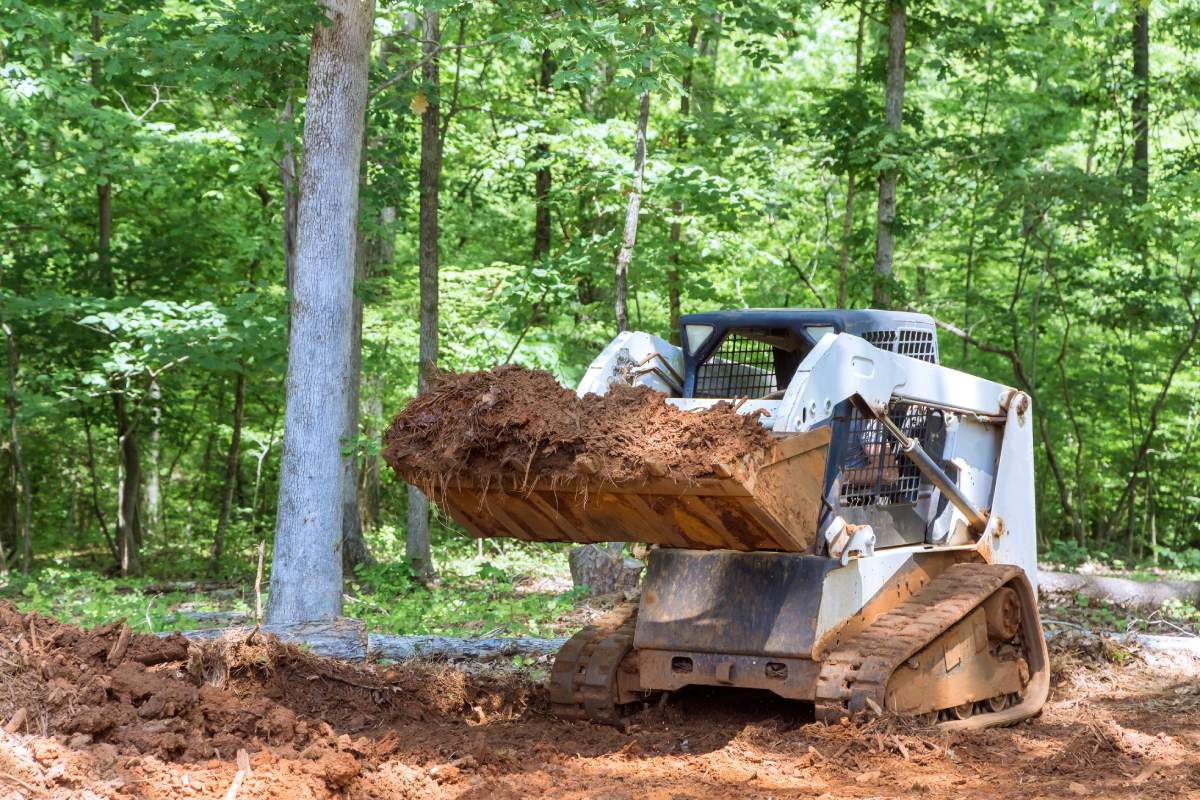Graders are essential machines in construction and roadwork, serving a critical role in levelling and shaping surfaces to create smooth, uniform finishes. Known for their distinctive design and functionality, graders contribute significantly to various projects, including road construction, agriculture, and landscaping.
This guide will explore what graders are, how they operate, the different types available, and what factors to consider when selecting a grader for your project.
What Is a Grader?
A grader, often referred to as a “motor grader” or simply a “blade,” is a heavy piece of construction equipment designed primarily for levelling surfaces. It achieves this by using a centrally located blade, which can be adjusted to meet specific grading requirements. Graders are commonly used in projects that require precise shaping and levelling, such as:
- Road construction: Creating flat surfaces or precise slopes for roads
- Soil levelling: Smoothing and shaping soil for large and small projects
- Agriculture: Preparing land for crops by flattening fields or creating drainage paths
- Snow removal: Clearing roads and highways in winter by moving snow to the side
These versatile machines ensure that surfaces are even and well-prepared, whether it’s a simple driveway or an intricate highway system.

What Does a Grader Look Like?
A grader has a unique and easily recognizable design. Typically mounted on a three-axle frame, it includes:
- Long chassis: This frame supports the entire machine and houses the components for manoeuvring and blade adjustment.
- Centrally located blade: Positioned between the front and rear axles, this adjustable blade can rotate, incline, and raise or lower to achieve the desired surface profile.
- Operator cabin: Positioned high for maximum visibility, the cabin provides the operator with a clear view of the work area, essential for precision tasks.
Graders are sizable, often requiring specialized training to operate effectively. With a complex system of controls, the operator can finely adjust the blade to handle even the most challenging terrain.
How Does a Grader Operate?
The core function of a grader lies in the manipulation of its blade, which allows operators to level, cut, and shape surfaces with precision. The blade is adjustable in three main ways:
- Height adjustment: This controls how deep the blade cuts into the surface.
- Angle inclination: Changing the blade’s angle helps the grader move material to the side or distribute it evenly.
- Rotation: Adjusting the blade’s rotation enables it to tackle different types of grading projects, from simple levelling to creating drainage ditches.
Advanced graders are often equipped with self-levelling systems that use GPS or laser sensors. These systems automatically maintain the blade at a precise height and angle, which reduces the need for constant operator adjustments. This technology ensures accuracy and consistency, especially important for large-scale projects such as roadways and airfields.
Types of Graders
Graders come in various sizes and configurations, each tailored to specific tasks and project scopes. Here are the main types:
1. Light Graders
Designed for smaller jobs, light graders typically weigh between 6 to 8 tons. They are ideal for municipal applications, such as:
- Road maintenance: Smoothing out uneven surfaces on urban streets
- Small construction projects: Leveling ground for compact building sites
2. Medium Graders
Medium-sized graders are a versatile choice for larger projects, often weighing up to 15 tons. They are best suited for:
- Road construction: Creating the base layers of asphalt roads
- Landscaping: Preparing and levelling larger plots of land
3. Heavy Graders
These machines, often weighing over 20 tons, are built for major infrastructure projects where maximum power and precision are required. Heavy graders are essential for:
- Highway construction: Crafting even surfaces and complex slopes for long-distance roads
- Airfield construction: Preparing the ground for runways and taxiways, where surface quality is paramount

How to Choose a Grader
Selecting the right grader depends on various factors, including the scope of work, site conditions, and budget. Here’s what to keep in mind when choosing a grader:
Define Your Project Scope
Consider the type of work you need the grader for. Large construction sites that require significant soil processing demand heavy graders with powerful engines and wide blades. For smaller tasks, like road repairs or municipal maintenance, a compact, manoeuvrable grader may be more suitable.
Assess Technical Specifications
Review the grader’s engine power and hydraulic system. Engine power is directly related to performance; a powerful engine will be better for heavy-duty tasks. Advanced hydraulics also improve the grader’s responsiveness, making it easier to achieve precise control.
Operator Comfort and Ergonomics
Since grading often involves long hours, an ergonomic cabin with a good line of sight and easy-to-use controls is crucial. Modern graders come with enhanced cabin features, including climate control, adjustable seats, and touchscreen interfaces, which improve productivity and safety.
Consider the Long-Term Costs
Graders are a significant investment. Beyond the purchase price, factor in the operating expenses, including fuel, maintenance, and spare parts. Choose a model with accessible service options and a dealer network that provides timely support and repairs. Mammoth Equip.com offers an extensive selection of graders and can help you find a model that aligns with both your operational needs and budget.
Noteworthy Grader Manufacturers
The market offers a range of manufacturers known for producing durable, efficient graders. Here’s a look at some of the top brands to consider:
Caterpillar
Caterpillar graders are renowned for durability and advanced automation systems, including GPS-based self-leveling. The brand also has an extensive service network, making it a reliable choice for long-term projects.
XCMG
A Chinese manufacturer, XCMG, offers quality graders at competitive prices, making them an ideal option for budget-conscious buyers. XCMG graders are often used in developing regions where affordability is a priority.
Komatsu
Komatsu is a Japanese brand known for its innovation and fuel-efficient models. These graders are designed with high build quality and include advanced control systems, reducing fuel consumption and operational costs.
Volvo
Volvo graders prioritize operator comfort and safety. Their ergonomic designs and user-friendly controls make them popular in industries where comfort is essential for productivity.
New Holland
Offering versatile graders, New Holland is known for reliable models suitable for both small and large-scale projects. Their graders are also easy to maintain, with long-lasting components that contribute to a strong return on investment.
Cost of Graders
The cost of a grader varies significantly based on factors like size, power, and brand. For new models, prices generally range between $100,000 and $400,000. However, used graders are available for around $40,000 to $200,000, depending on their condition and age.
If you would like to upgrade your grader for the best performance, Mammoth Equip.com can offer you a variety of grader upgrade options, from OEM parts to aftermarket and custom equipment, making it easier for you to squeeze every horsepower out of your grader.
Conclusion
Graders play an indispensable role in construction and road maintenance, offering the precision and control necessary to create level surfaces and complex slopes. When choosing a grader, it’s important to consider the type and scale of your project, technical specifications, long-term costs, and the manufacturer’s reputation.
Whether you’re working on a small landscaping project or constructing a major highway, the right grader can make all the difference in achieving high-quality, durable results.




